Tag Archives: thesis
Recitatif Short story by Toni Morrison. 2022 Best
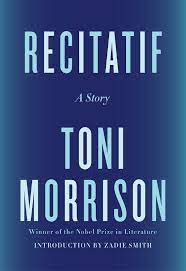
This assignment focuses on Recitatif Short story by Toni Morrison. You will be answering the following question for your analysis of Toni Morrison’s, “Recitatif.” QUESTION: Why do you think Toni Morrison conceals the race and ethnicity of the two main character’s Twyla and Roberta;
Recitatif Short story by Toni Morrison.
You will be answering the following question for your analysis of Toni Morrison’s, “Recitatif.” QUESTION: Why do you think Toni Morrison conceals the race and ethnicity of the two main character’s Twyla and Roberta; how does it support her main theme/s and what conclusions did you make based on close-reading? Be able to provide three examples of textual support that Morrison gives to support your claim. Your essay should identify the following: Introduction discuss main theme (include author, title and context) + Thesis Body paragraphs.
Recitatif Short story by Toni Morrison.
Provide textual support (quotes/scenes) that support your claim/thesis 3 textual examples are needed Make sure each paragraph supports and connects to your thesis Conclusion What you think Morrison’s main objective is and why it is important? Please read chapter 10 in SMG notes/lecture for support on how to craft argument around literature. You are interpreting some aspect of this story. You must back up interpretation with support from story. You may find additional support to story to support your claim with research. You must have a clear developed “thesis,” EX. “I argue Toni Morrison conceals the racial identity of the two main characters because______________.
Recitatif Short story by Toni Morrison.
Through historical inference, textual support and playing with stereotypes I believe Twyla is ______ and Roberta is _________.” You will be graded on the following: Basic Features: CHAPTER 10 in St. Martin’s Guide Clearly articulated THESIS: CLEAR STATED position Motive and theme + who is who (1-2 sentences) Well supported argument: Textual support and evidence (3 paragraphs with quotes or scene reference) Can include outside research Logical Organization Outlined and each paragraph connects to thesis Each paragraph has topic sentence Each paragraph has main point Transitions You may want to listen to Levar Burton.
Recitatif Short story by Toni Morrison.
Read this story at this link: https://omny.fm/shows/levar-burton-reads/recitatif-by-toni-morrison-part-1 (Links to an external site.) https://omny.fm/shows/levar-burton-reads/recitatif-by-toni-morrison-part-2 (Links to an external site.) CRAFTING YOUR ESSAY: OUTLINE Introduction: Include the author and title and context of the reading Include summary and main theme of story THESIS: 1-2 sentences clearly articulate what your position/argument is on the racial identity of the characters – Twyla and Roberta Body paragraphs: Provide textual support (quotes/scenes) that support your claim/thesis 3 textual examples are needed Make sure each paragraph supports and connects to your thesis. https://youtu.be/wYYZacHcZGI
Additional Files
Standardized Testing 2022 Best
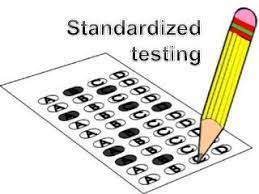
For this assignment we will explore whether standardized Testing is doing more harm than good. Paper details Read “Developing a Final Draft of a Research Paper,” Chapter 12.2 in the Writing for Success online textbook. This chapter provides detailed guidelines for composing a research/argument paper.
Standardized Testing
Paper details Read “Developing a Final Draft of a Research Paper,” Chapter 12.2 in the Writing for Success online textbook. This chapter provides detailed guidelines for composing a research/argument paper. Toward the end of the chapter is an example of a completed paper including APA in-text citations and the all-important “References” page. Take careful note of the formatting of the entire paper. The research/argument paper must meet the following criteria and contain the following components: A minimum of four (4) typed pages in APA style format.
Standardized Testing
An “Abstract” page is not required A clear thesis (or claim) statement in the Introduction (usually the last sentence in the intro) At least three (3) main points supporting the thesis (Body) At least two (2) direct quotations with correct punctuation and in-text citations A Conclusion that paraphrases the thesis from the Introduction At least four (4) valid sources (may be the same as those in your annotated bibliography) A References page (APA formatted). https://youtu.be/YtE0OsRWeYI
Additional Files
Critical Analysis of the Frankenstein. 2022 Best

This is a critical analysis of the Frankenstein. Evaluation Essay.. Now that you have completed Mary Shelley’s Frankenstein, you are in a good position to consider what critics have written about the novel.
Critical Analysis of the Frankenstein.
Frankenstein Critical Analysis. Evaluation Essay.. Now that you have completed Mary Shelley’s Frankenstein, you are in a good position to consider what critics have written about the novel. You will need a total of two critiques (also known as critical analysis essays) for this assignment. First, use the selection of links below to locate a critical analysis essay written about the 1818 version of Mary Shelley’s novel. You may focus most of your attention on this first critique. If the author of your critique is not specified, focus on the publication of the critique.
Critical Analysis of the Frankenstein.
Choose from among these sources: Romantic Circle’s Critiques: Critique 1 Critique 2 Critique 3 Critique 4 Critique 5 Critique 6 Professor Naomi Hetherington’s critique The questions in the study guides should have helped you evaluate this criticism in your head. Now it’s time to write it down! Your evaluation may go more smoothly if you approach the guiding questions in this order: Evaluate the critic/author: Who wrote the criticism you read? What credentials does the author have? (If you are using a valid source, you should be able to find these easily)
Critical Analysis of the Frankenstein.
Find the thesis of the article: What is the thesis of the critical article you’ve chosen? What point does the author want to make about Frankenstein? Evaluate the thesis: Do you agree with this thesis? Why or why not? We’ve covered many ideas in the study guides. Can you find points within the guides that support your agreement or disagreement with the critical writer(s)? Look for new supporting information rather than revisiting the same ones the critics have chosen. Evaluate the support: Whether you agree or disagree with the thesis, does the critic provide sufficient research from the text and outside references to make a strong case?
Critical Analysis of the Frankenstein.
What does the article have for support from the text or outside sources? In your opinion, what makes these references valid? Do you feel the author uses this support properly? Next, locate a second critique about the novel that includes ideas somewhat similar (genre classification, for instance) to any of the discussions you have in your essay. The second critique can either support or refute any of the claims in your paper. The objective of this portion of the essay is to further support your opinion of the primary critic’s thesis or support. https://www.youtube.com/watch?v=hopBzK6BOwo
Critical Analysis of the Frankenstein.
Therefore, for example, if you choose a secondary article that refutes any of your claims, you will need to counteract those ideas to bring the focus of your essay back in alignment with your essay’s thesis (your personal opinion of how the primary critic is either correct or incorrect in his or her thesis claim and/or how the first critic is either effective or ineffective in his or her support). Every discussion in this essay should ultimately support the claim you make in your thesis. For instance, if the first critic argues that Shelley’s writing is juvenile, and if you agree, does the second critic also support this thesis?
Critical Analysis of the Frankenstein.
How so? If the second critic does not support your assessment of the first critic’s thesis, what evidence can you use from the text to argue that the second critic is incorrect? Consider another example: if the first critic believes the novel is autobiographical, and if you disagree, does the second critic help you argue your own view of the first critic’s thesis? If so, how? Perhaps the second critic disagrees with your view and feels the novel is autobiographical– if that’s the case, be prepared to use evidence from the text to refute the second critic’s thesis and support your own argument.
Critical Analysis of the Frankenstein.
Using two critiques in this way will allow you to create a polished, comprehensive Evaluation Essay that allows you to connect your own ideas to those of seasoned critics. In addition to addressing each of the evaluative components above, develop your essay so it has a clear introduction, body, and conclusion. You must include an evaluative thesis statement in both the introduction and the conclusion. Ensure that each of your claims is supported with valid evidence from the literary criticism you have chosen; the novel, Frankenstein; and/or the study guides.
Additional Files
Emotions in Art and Philosophy. 2022 Best
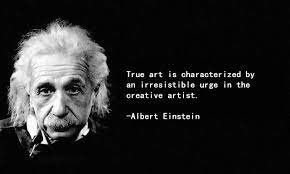
This paper explores emotions in Art and Philosophy. Paper writing checklist 0) Make your thesis statement ‘controversial’, arguable, and interesting. 1) Outline: as much as possible, make a detailed outline before you start writing.
Emotions in Art and Philosophy.
Paper writing checklist 0) Make your thesis statement ‘controversial’, arguable, and interesting. 1) Outline: as much as possible, make a detailed outline before you start writing. Then you’ll know what you need to include in earlier paragraphs to back up your later paragraphs. This is also the time to think about what you’re writing. Feel free to email me outlines. I can’t read drafts (no time!), but I’m happy to look at outlines or answer questions in person or over email. 2) Formatting and page length: Standard formatting is 12 point, Times New Roman font, double spaced, single inch margins on all four sides, indented paragraphs (i.e., no empty lines).
Emotions in Art and Philosophy.
those standards, each page contains roughly 330 words. So, if a professor suggests four pages, that means about 1300 words, and so on. For this class, at least, I don’t mind if you go over (even a lot over). 3) Paper Introduction: don’t introduce important information that you will rely on for your argument. Explain the topic (i.e., what the paper is about, broadly speaking). Conclude the introduction with your thesis statement (i.e., what you will argue about the topic, specifically). (If writing a longer paper, explain how you will argue for that thesis). 4) Paragraphs: each paragraph should have one unique point—not two points, and not a point that is made in another paragraph.
Emotions in Art and Philosophy.
5) Argument: each paragraph should, ideally, relate to the other paragraphs in your paper, and rely on the paragraphs that come before it. The aim is not to provide a wide range of reasons to support your argument, but to argue for your position by showing that it is logically necessary, given common assumptions or empirical evidence. Note: simply providing empirical evidence does not prove anything of interest. 6) Are you writing a compare and contrast paper? If no, go to 7. If yes: a) DO: tell the reader why she should care about the comparison. What does it tell us about something other than the things you’re comparing, or about one of the things you’re comparing? https://youtu.be/UXRY-CFFd5A
Emotions in Art and Philosophy.
This is part of your thesis statement (see 3). b) DO: explain each of the things you’re comparing separately, and fully, before comparing them. c) DO NOT: flip between the things you’re comparing, either within a single paragraph, or paragraph after paragraph. 7) Are you writing on a single text or idea? If yes: a) Explain the text or idea sympathetically, before you offer your argument. b) Don’t summarize too much: your summary should only include what you need in order to make your argument.
Emotions in Art and Philosophy.
8) Citation: Every time you provide information to the reader, you must tell her that you’re taking the information from somewhere, and where you get the information from—which will include the author’s name, the name of the text, the venue of the text (if a journal, for instance), and the location of the text (page numbers and so on). Ideally, you should “quote your source” (Evans, 2018). You can also paraphrase, and include a citation at the end of the paraphrase (Evans, 2018). Your works cited page must include full information for every text that you have used (see below). Only pedants care which citation system you use.
Emotions in Art and Philosophy.
There are a lot of pedants in universities, but they are not admirable people. 9) What to cite: Academic work should rely on peer-reviewed material as much as possible. Academic journals only accept articles that have been reviewed by experts in the field, and judged acceptable; websites will print anything; literally anyone anywhere can put a video on YouTube. There is an informal hierarchy of sources (see below).
Additional Files
The Other Wes Moore. 2022 Best
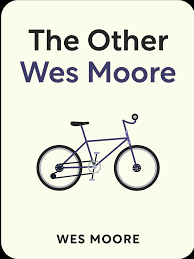
Prompt After reading The Other Wes Moore: One Name, Two Fates, you will write a 3-4 page analytical essay in response to the prompt below. What made the author Wes Moore traditionally more successful than the other Wes Moore
The Other Wes Moore.
Novel: The Other Wes Moore. Prompt After reading The Other Wes Moore: One Name, Two Fates, you will write a 3-4 page analytical essay in response to the prompt below. What made the author Wes Moore traditionally more successful than the other Wes Moore? In your response, consider the many influences on each Wes Moore’s life, such as family, friends, education, the neighborhood, or environment. Consider, too, each man’s personality and actions. A more thoughtful response might draw on other readings from the class, such as ideas about habits or addictions, mindset, or how one becomes an expert.
The Other Wes Moore.
You should support your answer with detailed references from throughout the book The Other Wes Moore. Tips Remember that this is a reading assignment as well as a writing assignment. That means you need to spend as much time reading the book carefully as you do writing the essay. A good essay will come from active reading. Your thesis should be a direct response to the prompt. The prompt asks for an argument, which means your thesis should be a claim that needs support. Write for an audience who is not in our class.
That means you’ll need to summarize or paraphrase important examples from the reading and choose short quotes from the book to help your reader understand the ideas or experiences.
The Other Wes Moore.
When arguing a point, first state the point and explain it in your own words. Then add examples and quotes from the reading to prove your point. Take the time to proofread after you’ve written your essay. Think about the kinds of mistakes you tend to make and watch out for those. Show you are really thinking about the topic—these are complex questions, so don’t settle for easy answers, and don’t feel that you have to take an either/or position. To add depth and complexity to your paper, include a paragraph of counterargument. That is, summarize how someone might argue against your thesis, then rebut that argument with evidence and explanations.
The Other Wes Moore.
Summarize and quote skillfully. This means: –When you put something in your own words, the author’s meaning remains true but your sentences and words should be significantly different, not just a few words changed. –Summaries should be accurate and specific — Use quotation marks when including an author’s exact words — Give the page number in parenthesis after a quote –Introduce quotes with tag phrases –Use your comment after a quote to explain how the quotes connect to your point. https://youtu.be/mHitZutug2o
The Other Wes Moore.
Grading: Your essay should include: A clear, specific, argumentative thesis Paragraphs with an assertion linked to the thesis Examples, details, explanations, summaries, and quotes that support the argument Thoughtful and in-depth discussion of the issues—on both sides of the question Well-written sentences Words that effectively express ideas. Few or minor writing or grammar errors. Correct MLA format
Additional Files
Gap between College and Career. 2022 Best
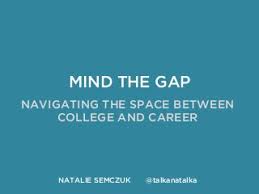
This is an argumentative paper on closing the Gap between College and Career. Argumentative Paper Format and Outline Template Introduction ● 1 to 4 paragraphs (max) ● Purpose: To lay the foundation for proving an issue or argument and making your thesis/claim.
Gap between College and Career.
Argumentative Paper Format and Outline Template Introduction ● 1 to 4 paragraphs (max) ● Purpose: To lay the foundation for proving an issue or argument and making your thesis/claim. This can include noting: ● Summary of the problem ● Definition of key terms ● Explanation of theories ● Provide a brief explanation of the theory or issue ● Note your claim at the end of your introductory paragraph Supporting Evidence Paragraph 1 ● Purpose of this paragraph: To develop your argument. This is normally one paragraph, but it can be longer depending on the evidence presented.
Gap between College and Career.
For the purposes of this class, keep this to 1 to 2 paragraphs. ● Topic sentence: The topic sentence provides details for examples to help your reader understand why you are inserting evidence that supports your claim. Your topic sentence is closely aligned with your thesis and works to introduce evidence to support your assertions. ● Explain your topic sentence: Provide clarification of your topic sentence here if you see a need. ● Evidence introduction: Insert your evidence with a brief introduction (As Dr. Smith stated, “…”)_ or in a full sentence (To better understand the issue this data will help to illuminate…).
Gap between College and Career.
State the evidence: What supporting evidence will you include to support or explain your topic sentence? You can paraphrase or quote your sources directly. This can include reasons, examples, facts, statistics, quotations, or paraphrases. Explain evidence: How should your readers interpret the evidence you just gave them? Don’t leave the information hanging without noting why you inserted the evidence. You will want to be as direct as possible with your readers regarding the meaning of the evidence inserted as tied to your claim. This statement can be an opinion and is typically about one to three sentences in length.
Gap between College and Career.
End this paragraph with a concluding sentence that reasserts the point of the topic sentence and helps your readers to see the overall claim you are making in the paper. Supporting Evidence Paragraph #2, 3, 4, etc. (have at least 4 supporting evidence paragraphs). Repeat above instruction for paragraph 1 Counter Argument Paragraph. Purpose of this paragraph: To acknowledge and anticipate opposition to your claim or thesis while making yourself seem objective and knowledgeable about the topic. https://youtu.be/9XIuIzVW1iQ
Gap between College and Career.
Length: 1 to 3 paragraphs ● Commentary: Note what possible objections your reader might counter your argument with. Be sure to provide common ground and note some aspects of their reasoning to show you understand the issues. Insert two to three arguments here and counter them with evidence. ● Conclusion: End your counter-argument with a concluding sentence that reasserts your argument as a whole.
Additional Files
Summary and Reviewing a Text – 2022 Best

This assignment is about writing a Summary and reviewing a Text. An important element of studying language and improving our writing skills involves understanding texts and accurately informing others about what those texts mean.
Summary and Reviewing a Text
Writing Assignment – Writing a Summary, Reviewing a Text. Purpose An important element of studying language and improving our writing skills involves understanding texts and accurately informing others about what those texts mean. Reading critically and carefully is an essential skill for any strong writer. In addition, accurately summarizing someone else’s arguments is equally important for a good writer. Thus, for this essay you will pick an audience of your choice and you will summarize for your audience a text by analyzing and mapping a writer’s argument, understanding the specific details in a text, and informing your readers about the text’s evidence and arguments. https://youtu.be/LbO3lRXT0ww
Summary and Reviewing a Text
You will also review the same text by either recommending or not recommending the text to your readers. Task Write a 2-3 page essay in which you summarize and review a text, based on careful reading of the writer’s argument. First, make sure you fully understand the writer’s argument and all the details of the text. Then, summarize accurately and succinctly the writer’s claims. Finally, conclude with your review and a recommendation for your audience. The point of this paper is not to simply agree or disagree with the author, but rather to use careful reading strategies to understand what a text is trying to convey. Then, you will evaluate the text for your own audience.
Summary and Reviewing a Text
Include these specific steps: Provide relevant information about the text, the author, and the subject. Carefully read and break down a text so you fully understand its points and its structure. Pick a specific audience to whom you wish to address your paper and pay attention to the audience’s needs and expectations. Include a main take-away (thesis) that indicates how your paper is structured and what it is about. Carefully and accurately summarize the writer’s main points and how exactly the writer argues and develops these main points.
Summary and Reviewing a Text
Explain the writer’s logic (logos) and the sort of evidence, data, stories, or descriptions the writer uses. Effectively integrate quotations, and paraphrase from the text into your own essay. Include a clear review, or recommendation, of the text, as well as your criteria for the evaluation: do you want your readers to read the text, or do you find it is not worth their time? Why or why not? Support your recommendation with clear examples. Be aware of the ethics of reviewing as you consider the effects of your judgments.






